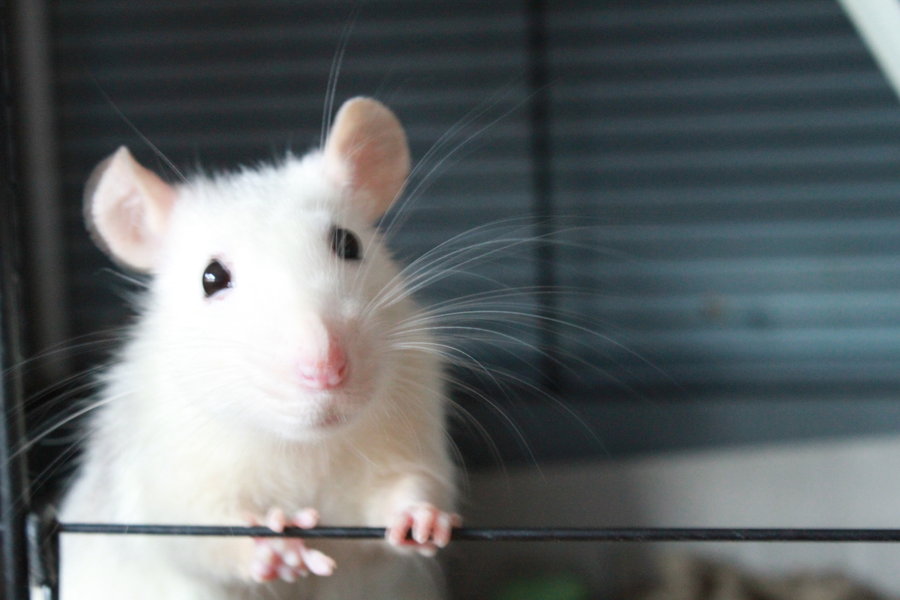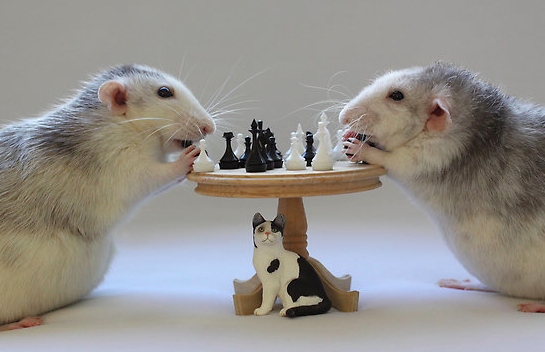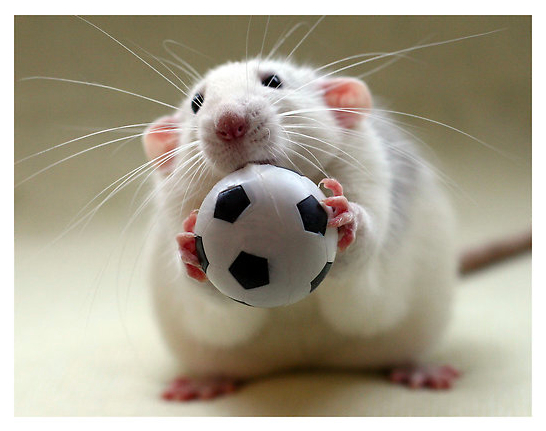When I was 14 years old, my best friend Debbie used to invite me to her house to listen to The Backstreet Boys and play with her two beloved pets, Monica and Rachel. These favourite Friends weren’t cats or dogs; they were large black and brown rats. Cuddling Monica and Rachel was one of the highlights of my school week, these sweet girls being affectionate, clever, entertaining and – contrary to popular opinion – very clean. So perhaps it was less of a surprise to me than most when a recent RightPet Pet Ownership Study revealed that today’s children have the deepest love for pet rats; more so than cats or dogs. Based on 5,150 reviews from 2,867 RightPet members from 74 countries, children who owned animals between the ages of 10 and 17 reported that their rodents gave them more satisfaction than any other type of pet.

Most interestingly, unlike cats and dogs, age was negatively related to appreciation of rats: the older people get, the less enamored they are with the idea of rats as pets, especially once they pass the age of 17. By contrast, with cats and dogs, satisfaction increased as the owner became an adult. For a kid, rats are cheap and easy to care for, have novelty value, and are intelligent, fun companions. Then when we get older, we forget all these rational reasons to love rats and become conditioned by society’s view of rodents as ‘dirty’ lower animal forms, only good for laboratory experimentation at best and extermination at worst. This snobbery seems misplaced when we consider the complex cognitive abilities of a rat: while human working memory can only retain about 7 unrelated items at one time, studies have shown that rats can remember details about more than 17 different arms in a maze and retain this information for 100 times longer.

These days, when asked to think of ‘an animal’ people will normally picture a dog or cat: they think of pets, not food or working animals. Rodents aren’t normally put in that pet category but are instead relegated to the type of animal we use in research or avoid as vermin. Most people regard their pets completely differently from the way they regard farmed or laboratory animals, if they think about these groups at all. They view their animals as members of the family, not an income source, food, or a science experiment. There is still a deep divide between the intelligence or consciousness people attribute to so-called noble animals, like elephants, pets and horses, compared to livestock, rodents or fish.
Yet the pig that ends up as bacon on our avocado toast is more intelligent than the family dog, and as smart as many young infants. Pigs have been shown to be able to recognize themselves in a mirror, the self-awareness test that is supposed to demonstrate higher cognition. Children can only do this at around three years of age, while dogs have rarely passed, normally barking at a mirror as if it’s another dog or ignoring it. There is enormous cognitive dissonance at play here, especially when we consider the vastly different rights and privileges we assign, say, a pet beagle compared with a laboratory beagle. Why are some animals ‘friends’ and others ‘food’, even when there is no logical distinction in their intelligence, affection, cleanliness, and ability to suffer pain or feel joy?

The answer lies partly in the changing role of animals in our society over the last two centuries. The sociozoological scale, developed by Arnold Arluke and Clinton Sanders in 1996, ranks animals according to their place or use in human society rather than by species. They use four domains: friends, tools, vermin, and demons. Friends and tools are perceived as “good” animals, because they benefit humans and society, while vermin and demons represent “bad” animals who might harm society, and are therefore placed at the bottom of the scale. In the nineteenth century, this scale would have looked very different to how it looks now, with ‘tools’ valued most highly (cattle and horses at the top). Today, horses remain at the top of the sociozoological scale but as ‘friends’, up high as companions with dogs and cats rather than being valued for their use as transport.
In a world where over 56 billion farmed animals are farmed and killed for food each year, tool animals like pigs and chickens are not assigned the same value they used to have. The same goes for research ‘tools’: 95 per cent of animals used in research are birds, rats and mice, but despite clear evidence that they suffer despair and pain, none of these species are considered ‘animals’ under the Animal Welfare Act in the United States. It’s impossible to know how many rats are used each year for research in America, for what purposes, and the pain and distress experienced by each one, because this data is not gathered or reported by the USDA. That’s how much value we assign these smart, affectionate creatures, whom our children love more than cats and dogs.

In 1977, Joyce Tischler, co-founder of Animal Legal Defense Fund, the animal law organization in the United States, described domesticated cats and dogs as “a higher form of life, having the ability to feel and express their pain and pleasure, and the ability to reason and to desire.” She asserted that the law should recognize these ‘abilities’ and afford them legal rights: they should be removed from the property category and instead a guardianship model should be introduced, based on “care and compassion”. Happily, this guardianship model remains today. However, we also now know that other animals can feel and express pain and pleasure, and have been proven to be able to reason and desire, from rats and chickens to (most recently) fish. So why do we continue to exclude these other animals from our circle of care and compassion?
Tischler once recognized the need for a human intermediary to put dogs and cats “on more equal footing with the rest of society” and she always intended the legal treatment of these two species to eventually “represent the treatment of nonhumans as a whole”. Perhaps now, almost half a century later, we might learn something from our rat-loving children and become intermediaries for the other animals that need us too.

Hi Alice – what a beautifully written and thought-provoking post. I wasn’t aware of the “sociozoological scale”, but obviously rats have traditionally been placed in the “vermin”, or even “demon” (what a silly word) categories.
Interesting – a 2018 Norwegian study published in the Proceedings of the National Academy of Sciences http://www.pnas.org/content/early/2018/01/09/1715640115 has exonerated rats for one of the greatest misfortunes in human history. The study authors argue that human parasites – body lice and human fleas – were the actual vectors for the deadly bacteria. This finding was based on a mathematical analysis of the rapidity of the spread of plague, a speed that could not be explained by rat flea to human transmission; the high rate of household infections; a scarcity of rats in the archaeological record; and no descriptions of massive rat deaths preceding the plague.
Thanks Brett, I’m really glad you liked the post. And so interesting about the history of our relationship with rats as ‘vermin’ too. Maybe we should rethink the word scapegoat and start using ‘scaperat’!
Thanks for sharing this useful information! Hope that you will continue with the kind of stuff you are doing.